TPO - Before the proposal of the consulting unit on building an elevated road in some projects to expand the gateway road to Ho Chi Minh City using BOT contracts, representatives of some investors said that there should be a plan to build an underground road first, and only when the traffic volume is high should we consider building an elevated road.
TPO - Before the proposal of the consulting unit on building an elevated road in some projects to expand the gateway road to Ho Chi Minh City using BOT contracts, representatives of some investors said that there should be a plan to build an underground road first, and only when the traffic volume is high should we consider building an elevated road.
On November 14, the Department of Transport of Ho Chi Minh City held a consultation conference on the pre-feasibility study report of existing road infrastructure projects applying BOT contracts according to Resolution No. 98 of the National Assembly on piloting special mechanisms and policies for the development of Ho Chi Minh City.
Proposal to build elevated and low-lying roads
At the conference, BR Design Consulting Company (consulting unit) said that Ho Chi Minh City will implement 5 BOT projects including: expanding National Highway 13, National Highway 1, National Highway 22, North-South axis and Binh Tien bridge and road.
Currently, units have researched plans to build these routes according to the proposal to build low-lying roads, elevated roads, and combine other types of transportation.
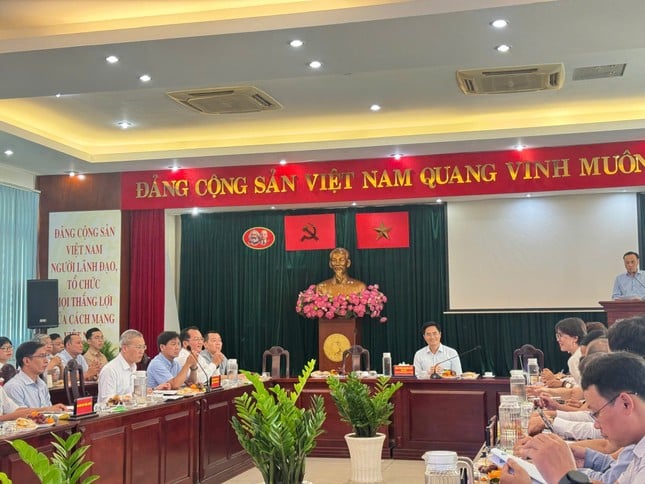 |
The conference organized by the Ho Chi Minh City Department of Transport attracted the attention of investors. |
Specifically, for the project to expand National Highway 13 (from Binh Trieu Bridge - connecting to Binh Duong Province), with a length of 5.9 km, with many research options such as low-speed, viaduct. The consulting unit said that this is a group A project, the main road speed is from 60-80 km/h.
Evaluating this project, the consulting unit said that the volume of land clearance (GPMB) is very large, so when conducting a pre-feasibility study, it is necessary to determine the GPMB volume with nearly 18 hectares and about 1,149 affected households.
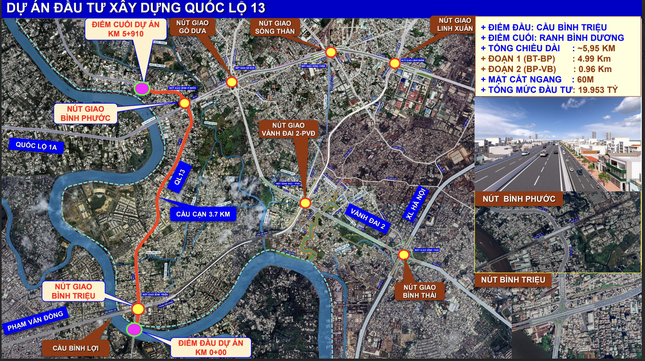 |
National Highway 13 construction project. Photo: Ho Chi Minh City Department of Transport |
If the project is implemented at a low level, the total investment will be about 18,000 billion VND and if the route is built according to the overpass - elevated route option, the total investment will be about 19,000 billion VND.
After consideration, the consulting unit recommended building an elevated road in the middle of the road and expanding the parallel road below, so the project will have a total investment of more than 19,000 billion VND.
With the project to expand National Highway 1 (from Kinh Duong Vuong Street - bordering Long An province), the length is 9.6 km. There are 12 intersections on the route (crossing the median strip), including 3 interconnecting grade-separated intersections (Tan Kien intersection, Binh Thuan intersection, Ring Road 3 intersection).
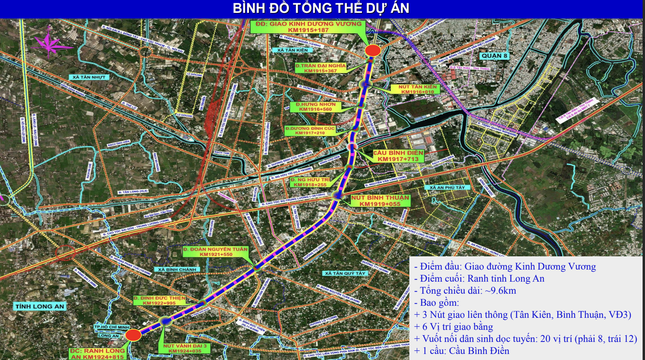 |
Overall map of Highway 1 expansion project. |
The consulting unit is studying the options of going low and going above ground for some suitable sections. Different level intersections will be completely built, with a total investment of about 15,897 billion VND, of which compensation and site clearance costs will be about 11,000 billion VND.
At the project to expand National Highway 22 (An Suong intersection - intersection of National Highway 22 with Ring Road 3), the length is 8.7 km. The proposed units, this project is studied to go underground combined with overpasses at 7 intersections on the route. In the elevated option to serve high-speed traffic connecting Ring Road 3 to An Suong, in the middle of metro line 2. On the route there will be 3 large intersections, some at different levels. The total investment of the project is expected to be 8,810 billion VND.
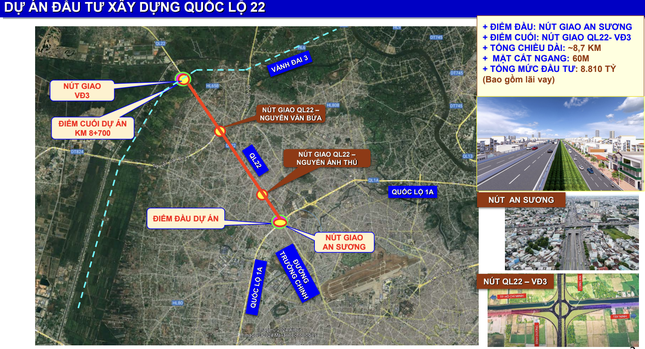 |
Highway 22 project. |
For the North-South axis project (Nguyen Van Linh intersection - connecting with the entrance to Ben Luc - Long Thanh highway), the consulting unit believes that this is a project with advantages in the land acquisition stage. This project will study low and high ground, so the proposed plan is to have an overpass deviated to avoid the water supply pipe and metro line 4. The total investment according to the two plans is from 7,400 - 8,483 billion VND.
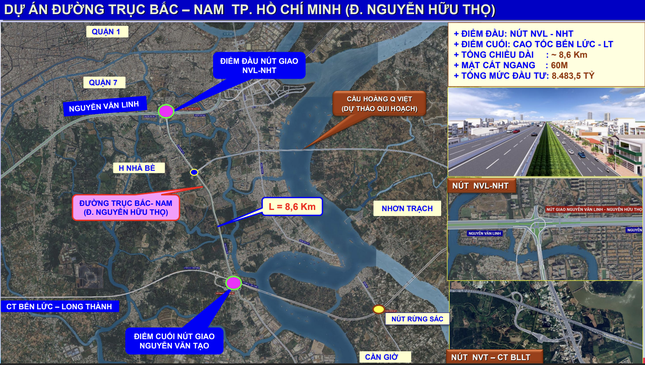 |
North-South axis project. |
Finally, there is the Binh Tien bridge-road construction project (Binh Tien extended road - Pham Van Chi) with a length of 3.6 km. This project is expected to build an overpass, with a total estimated investment of about 6,863 billion VND.
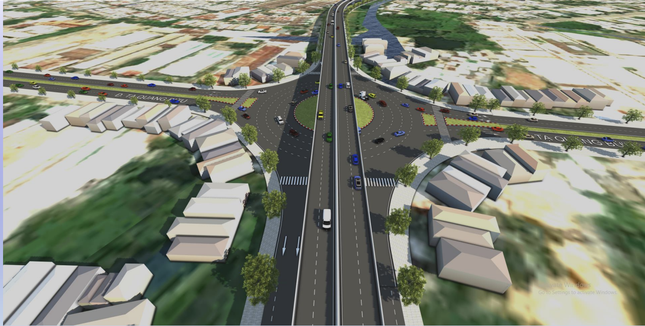 |
One of the design options for Binh Tien bridge and road. Photo: Ho Chi Minh City Department of Transport |
Should we build an elevated road or not?
Speaking at the conference, Mr. Le Quynh Mai - Vice Chairman of Deo Ca Transport Infrastructure Investment Joint Stock Company said that when implementing the above BOT projects, it is necessary to calculate the toll collection plan by section and by turn.
“The projects are urban roads, so the use of elevated roads should be limited, and underground and tunnel options should be considered at major intersections. In addition, the participation rate of the state budget should be from 50 to 70% in the project to shorten the capital recovery period, ideally only about 20 years or less,” Mr. Mai said.
Mr. Le Quoc Binh - General Director of Ho Chi Minh City Infrastructure Investment Joint Stock Company (CII) said that it is necessary to recalculate the proposal to build elevated roads in some projects. In the short term, it is necessary to build low-level roads first, and only when traffic volume is high will we consider building elevated roads. In particular, in phase 1, it is necessary to build low-level roads, low-level intersections to build overpasses and underpasses.
"Regarding the disbursement of the state budget, it is necessary to complete 90% of the site clearance project before implementing the project, to avoid the situation where contractors are stuck and burying capital in the projects," said Mr. Binh.
Mr. Tran Quang Lam - Director of the Department of Transport of Ho Chi Minh City said that through Resolution No. 98, the National Assembly has allowed Ho Chi Minh City to pilot the expansion of existing roads under the BOT form.
Regarding the implementation roadmap, the leader of the Ho Chi Minh City Department of Transport said that in December this year or at the latest by January 2025, the competent authority will submit a pre-feasibility study report to the grassroots appraisal council; in the first quarter of 2025, approve the investment policy; select a contractor to prepare a feasibility study report, survey, prepare a feasibility study report, survey investor interest; approve the feasibility study report in the third quarter of 2025. By the end of 2025 at the latest, the report will be completed to select investors. The city will study each project separately, and any favorable project can start construction immediately.
"The road projects being implemented are existing roads that need to be invested in and expanded, but must ensure the harmony of interests of all parties," Mr. Lam stated at the conference.
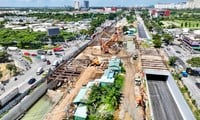
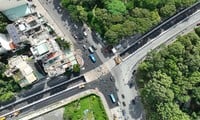
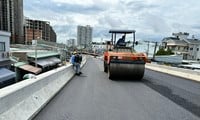
Source: https://tienphong.vn/ban-phuong-an-lam-5-du-an-bot-mo-rong-cac-cua-ngo-tphcm-post1691625.tpo



![[Photo] Overcoming all difficulties, speeding up construction progress of Hoa Binh Hydropower Plant Expansion Project](https://vstatic.vietnam.vn/vietnam/resource/IMAGE/2025/4/12/bff04b551e98484c84d74c8faa3526e0)



![[Photo] Closing of the 11th Conference of the 13th Central Committee of the Communist Party of Vietnam](https://vstatic.vietnam.vn/vietnam/resource/IMAGE/2025/4/12/114b57fe6e9b4814a5ddfacf6dfe5b7f)
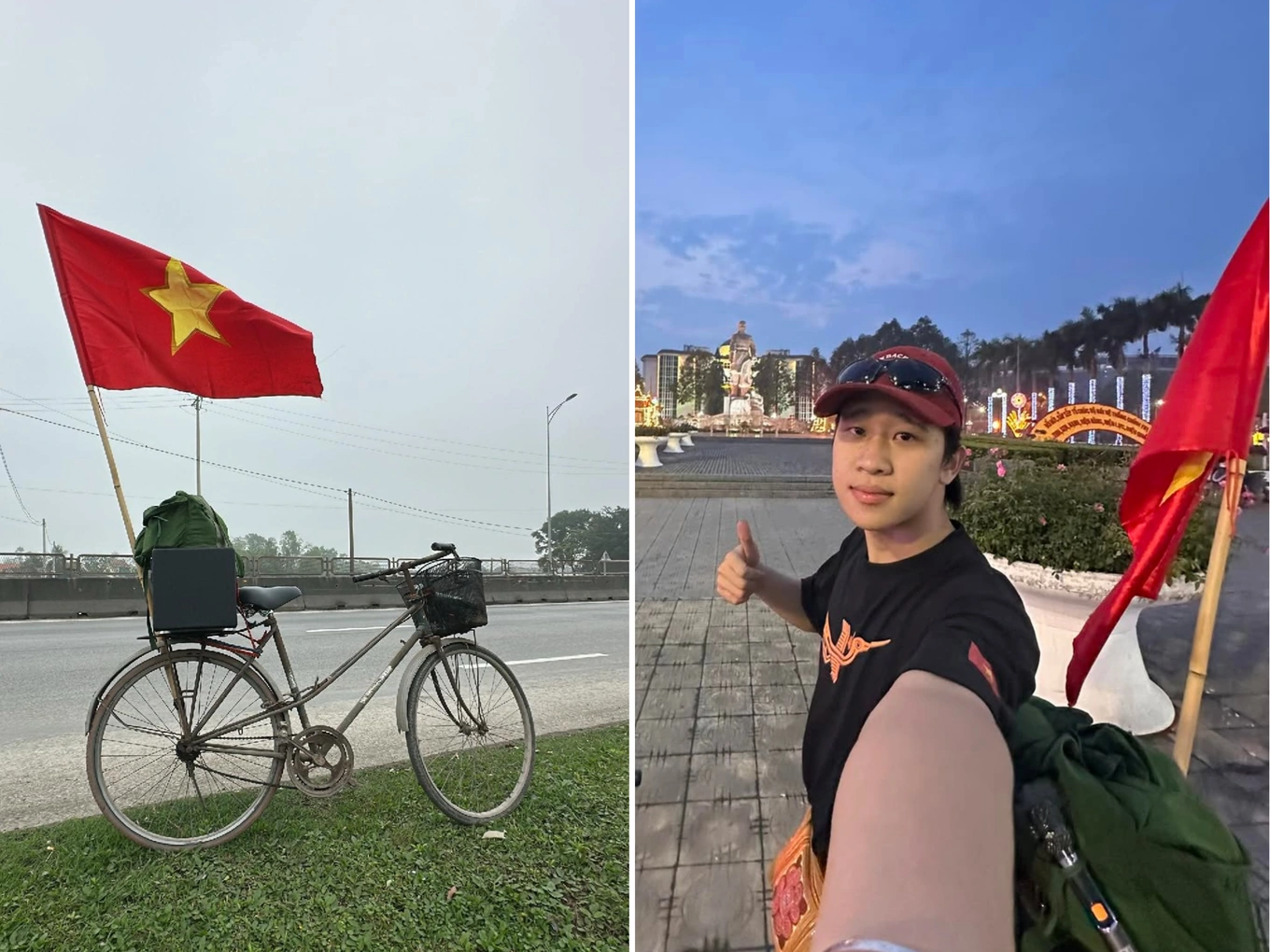



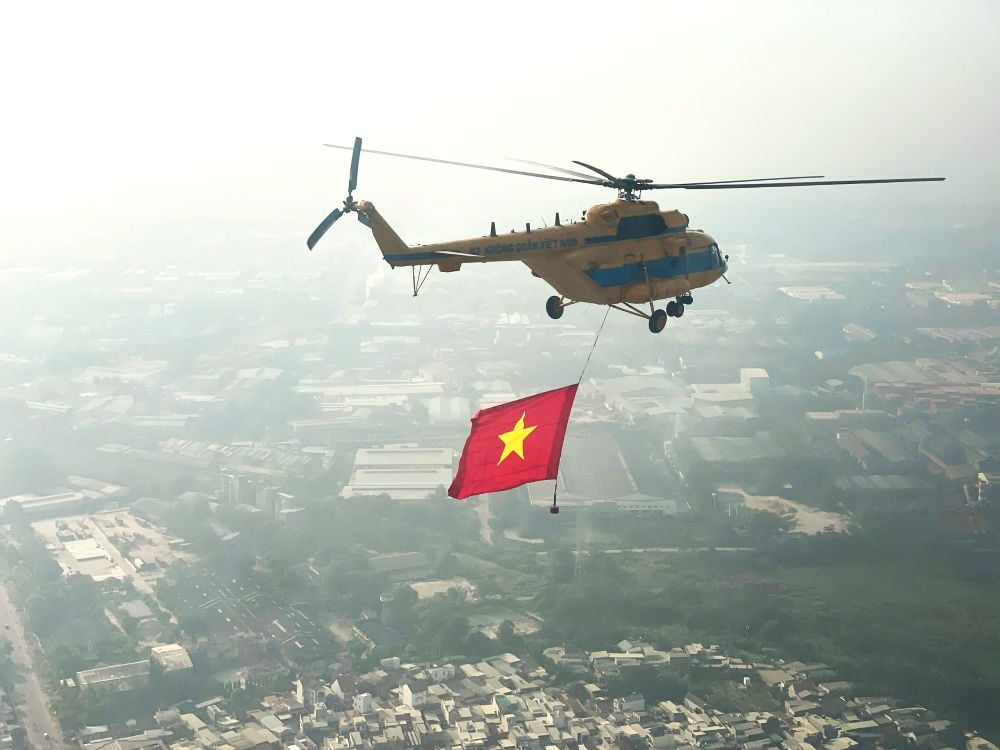


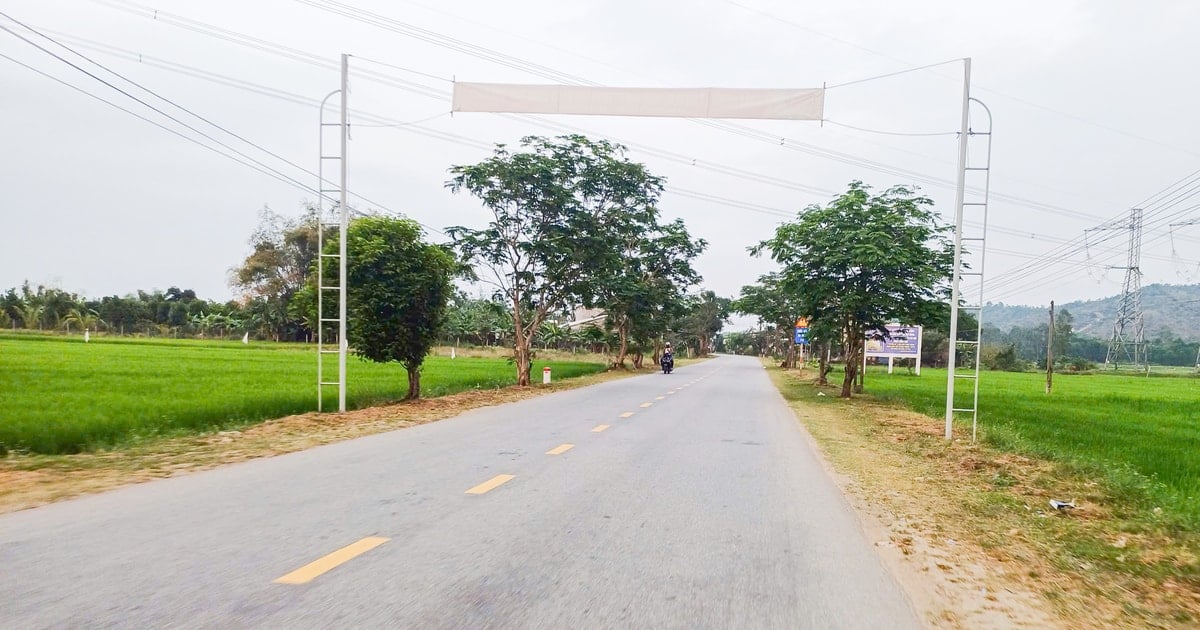


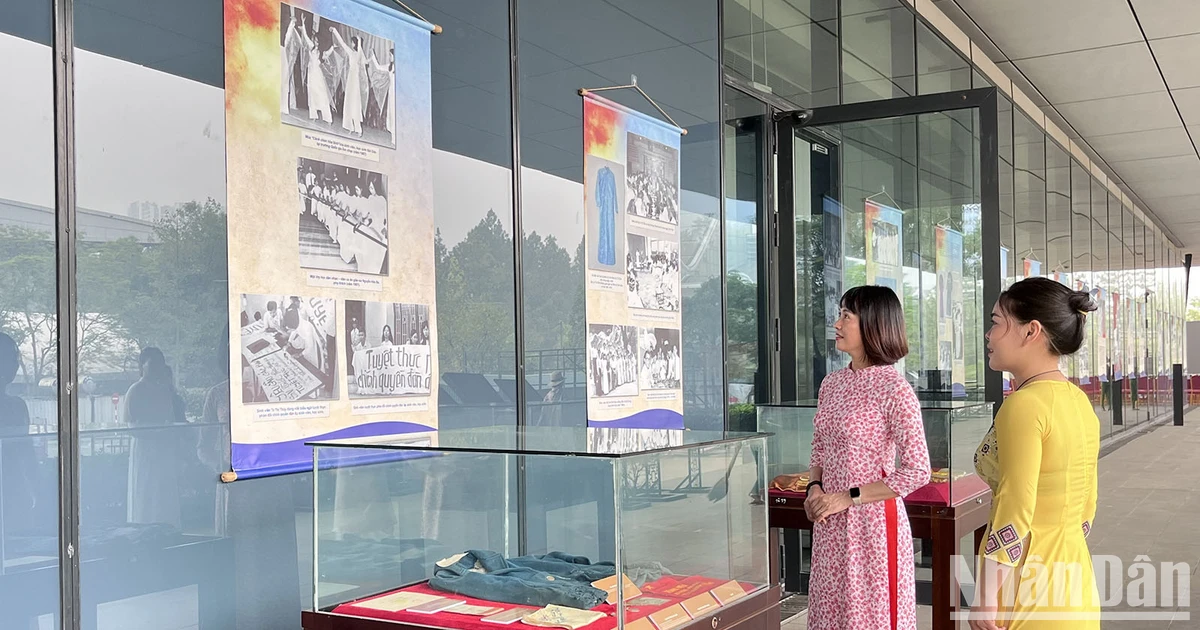


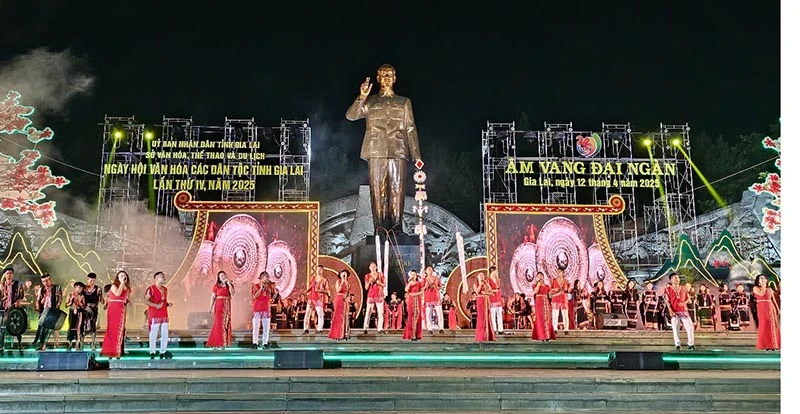








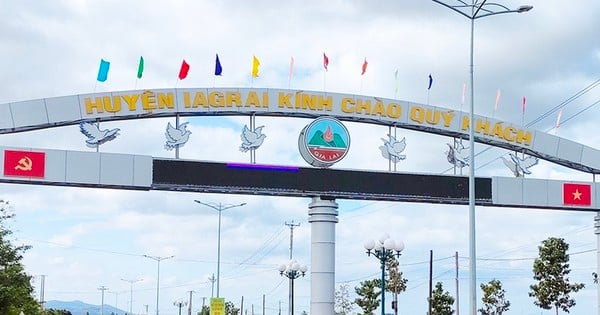

















































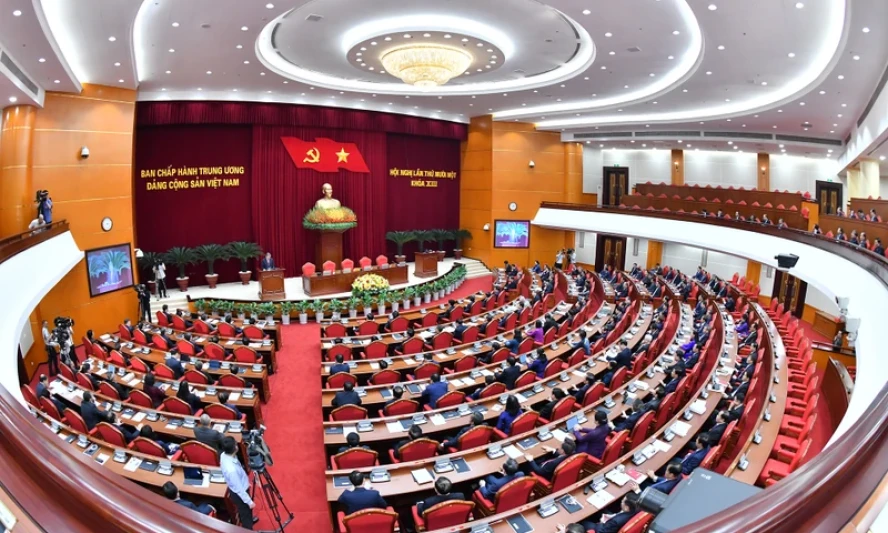
















Comment (0)